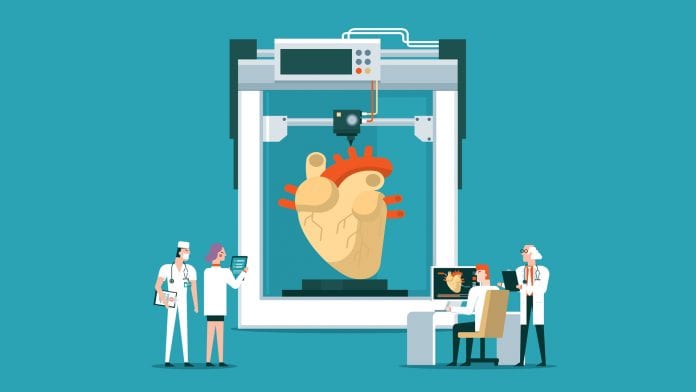
Researchers at Penn State University have successfully repaired craniofacial skin and bone by implementing bioprinting technology during surgery.
The team, led by Ibrahim T. Ozbolat, Hartz Family Career Development Associate Professor of Engineering Science and Mechanics, Biomedical Engineering and Neurosurgery, Penn State, trialled their bioprinting procedure using a rat model, achieving successful results which may enhance methods of healing skin and bones.
Ozbolat said: “This work is clinically significant. Dealing with composite defects, fixing hard and soft tissues at once is difficult. And for the craniofacial area, the results have to be aesthetically pleasing.”
Difficulties of craniofacial repair
Repairing traumatic injuries to the head and skull is an arduous task; there is the requirement for meticulous precision, with the craniofacial region undeniably being the key to our vanity and the multiple layers of tissue involved make seamless repairs exceptionally difficult.
The contemporary method for repairing holes in the skull, which involves both bone and soft tissue, utilises bone from a cadaver or another part of the patient’s body, which must then be immersed in soft tissue with blood flow, or the bone will die. Surgeons then repair the soft tissue and skin.
To overcome a complex procedure, the team used extrusion bioprinting and droplet bioprinting of mixtures of cells and carrier materials to print bone and soft tissue.
“There is no surgical method for repairing soft and hard tissue at once. This is why we aimed to demonstrate a technology where we can reconstruct the whole defect, bone to the epidermis, at once,” said Ozbolat.
Extrusion and droplet bioprinting
The researchers’ first order of business was to tackle the issue of bone replacement, concocting a mixture able to repair a five-millimetre hole in the skull that boasted printable and nano toxic properties. The resulting material they named “hard tissue ink”, which consisted of collagen, chitosan, nano-hydroxyapatite, and other compounds and mesenchymal stem cells.
When at room temperature, the hard tissue ink extrudes; however, when applied to a patient, their body temperature heats the substance, instigating physical cross-linkage of the collagen and other parts of the ink without the requirement for a crosslinker device or chemical changes.
Subsequently, the team employed droplet printing to manufacture soft tissue with layers finer than the bone, using collagen and fibrinogen in alternating layers with growth-enhancing and crosslinking compounds. The individual layers of the skin, including the epidermis and dermis, differ. Hence, the bio-printed soft tissue layers likewise differed in composition, with experiments repairing six-millimetre holes in full skin, achieving excellent results.
“This approach was an extremely challenging process, and we actually spent a lot of time finding the right material for bone, skin, and the right bioprinting techniques,” said Ozbolat.
Scrupulous analysis was then conducted to determine the geometry of the defect; the bone layer was laid down, and the barrier layer mimicking the periosteum deposited – a heavily vascularised tissue layer that surrounds the bone on the skull. After applying this barrier layer, the team printed the layers of the dermis and then the epidermis.
“We needed the barrier to ensure that cells from the skin layers didn’t migrate into the bone area and begin to grow there. “It took less than five minutes for the bioprinter to lay down the bone layer and soft tissue,” explained Ozbolat.
Throughout their experimentation, the team conducted the procedure over 50 defect closures, attaining 100% closure of soft tissue in four weeks, with the bone closure rate achieving 80% in six weeks. However, it usually takes longer than this period for bones to reach 100% closure.
Ozbolat and his team now want to transition their procedure to human application.









